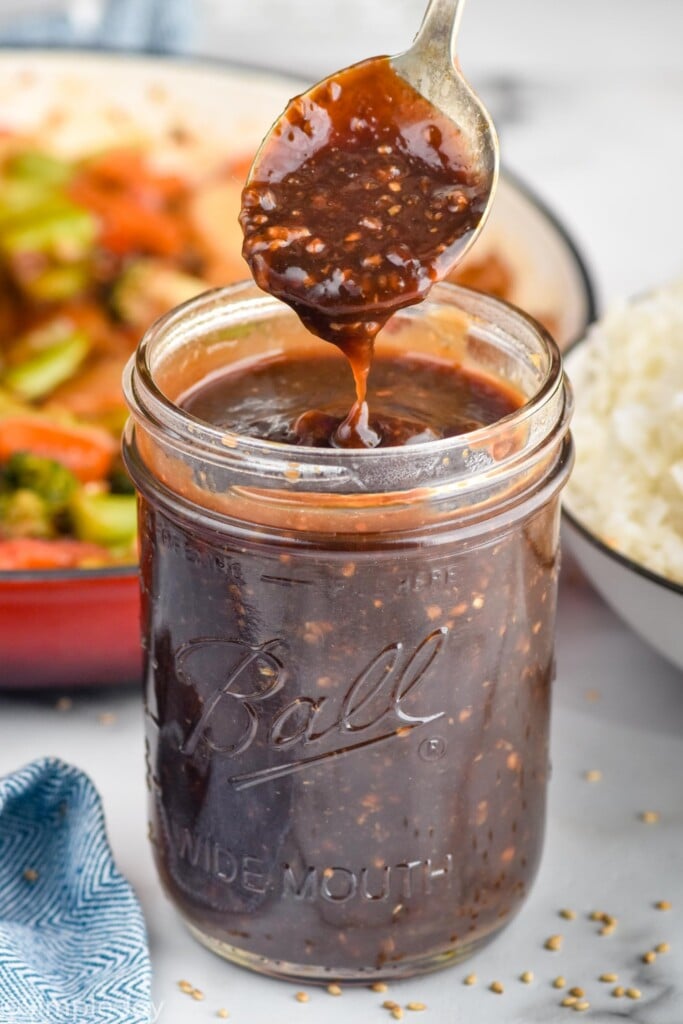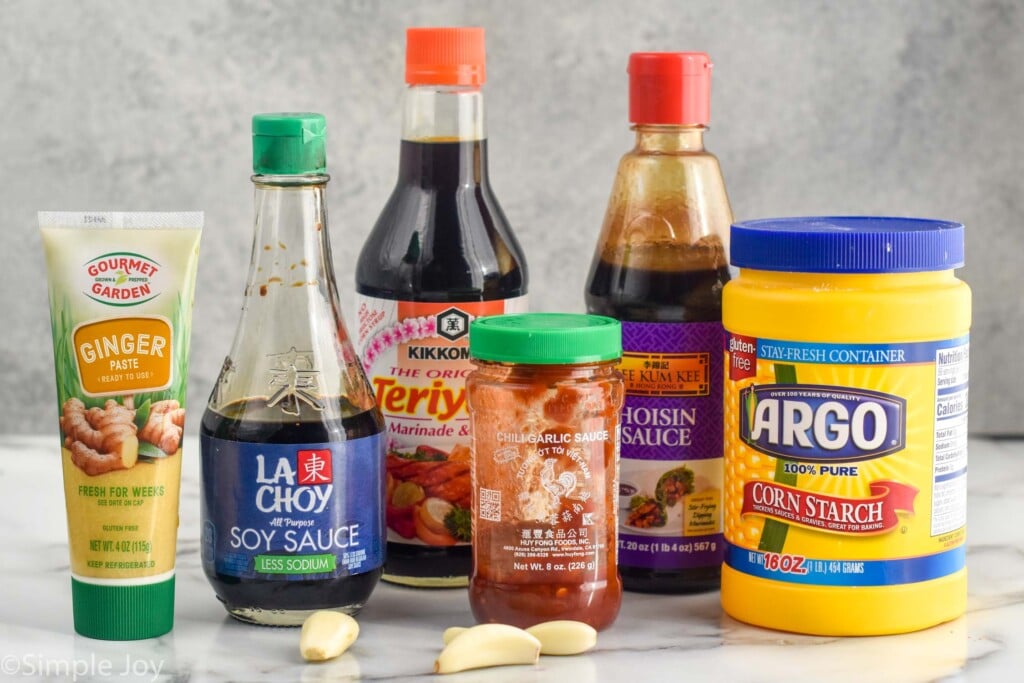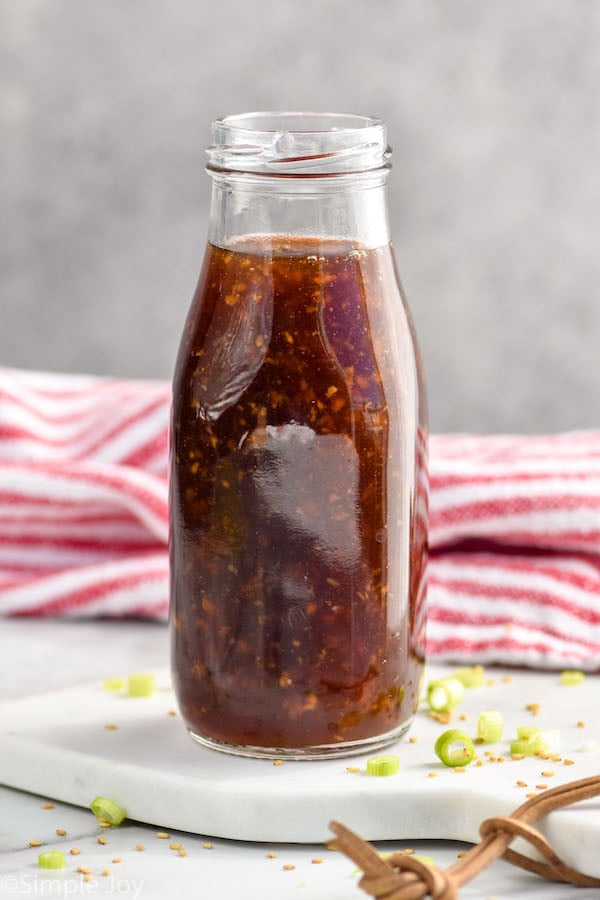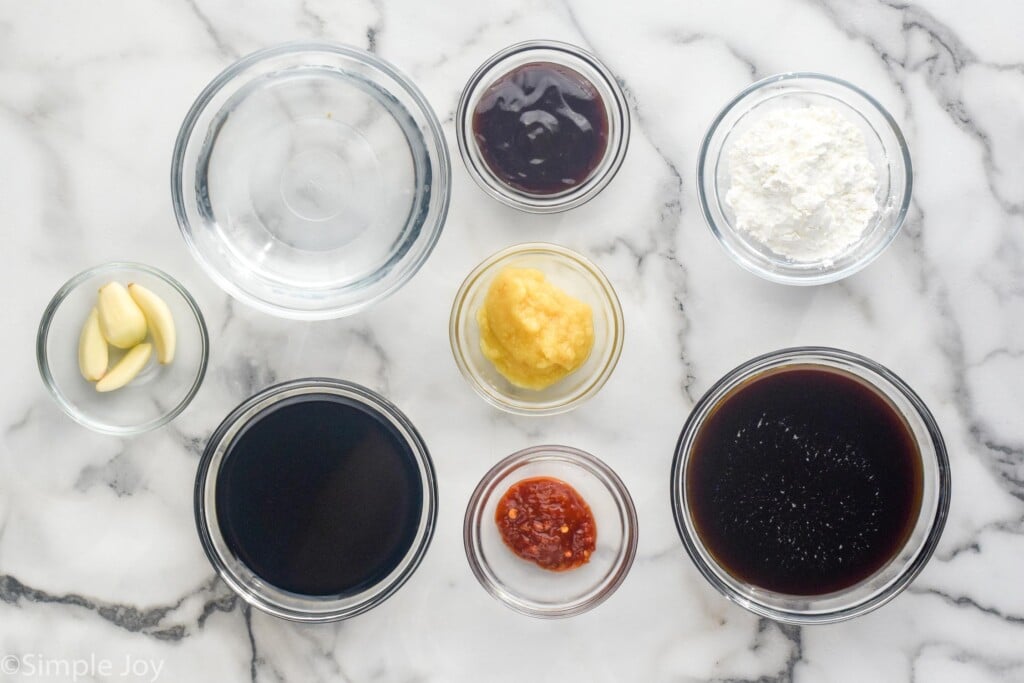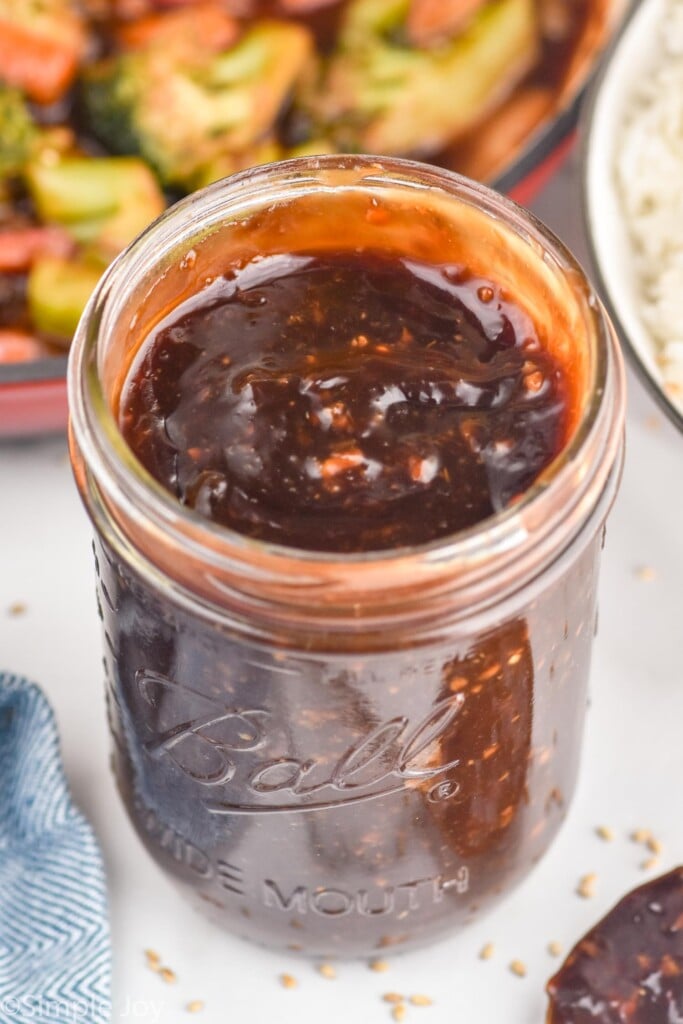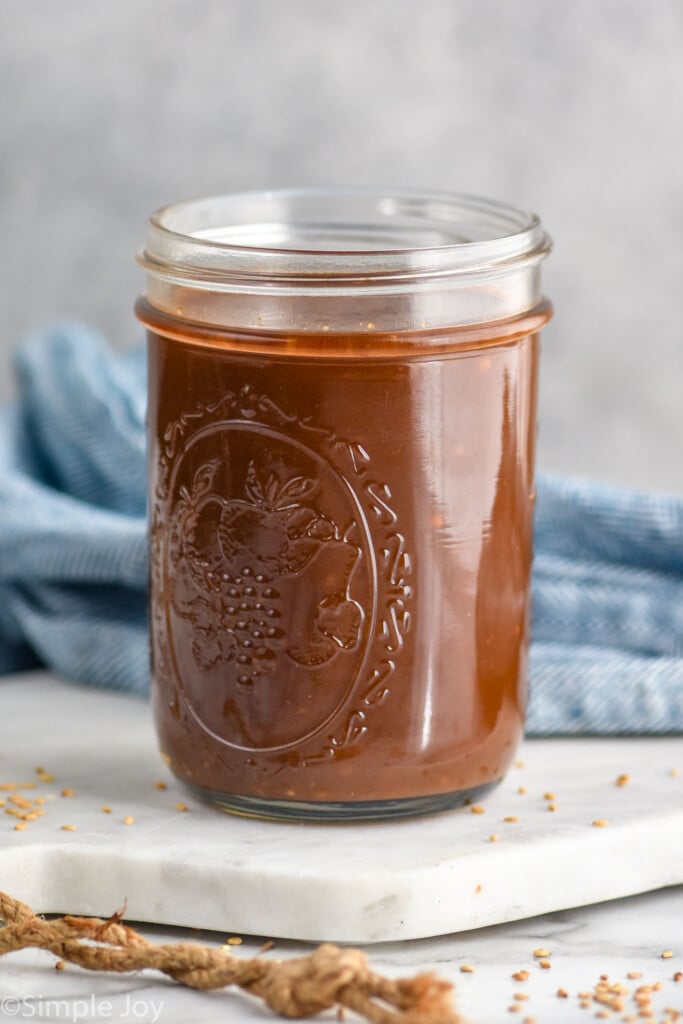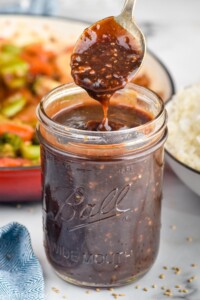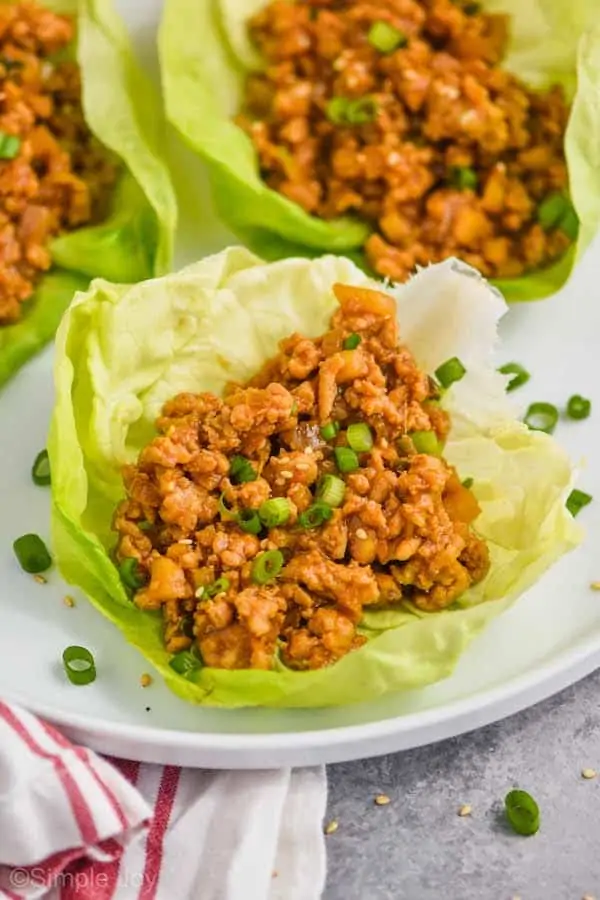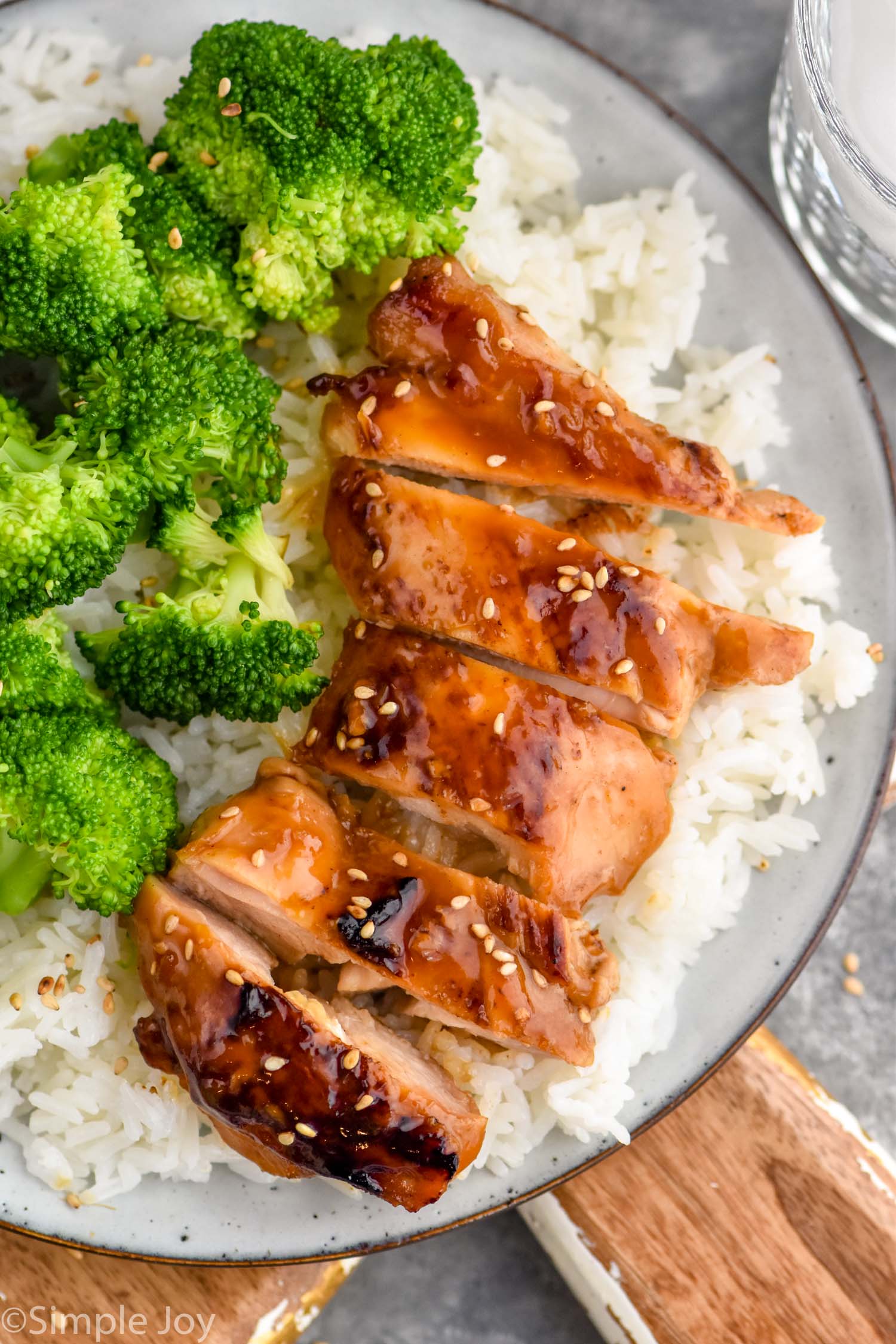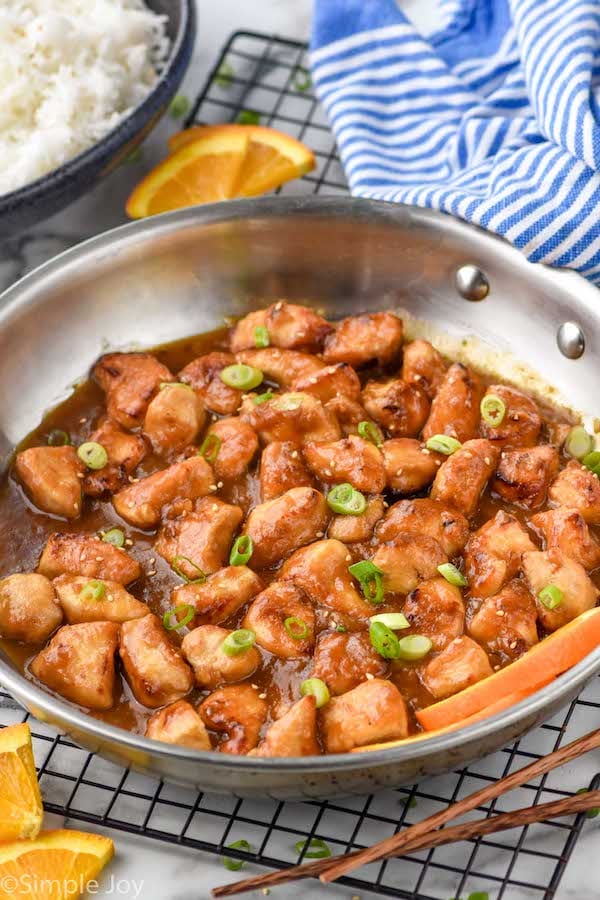Homemade Teriyaki Sauce
While you can buy teriyaki sauce for stir fry, it is easy to make your own and the flavor is amazing. In my Teriyaki Sauce Recipe, I share how to adjust the sauce for lower sugar, less sodium, and to be gluten-free. This is our go to stir fry sauce. You’ve likely seen it many times before on Simple Joy, but it was time for it to have its own dedicated post. Your family will absolutely love this recipe and all the possible stir fries you can make with it. Don’t miss the links above the recipe card with all of our favorite stir fries.
Water: Adds volume to the sauce without affecting the taste at all. Teriyaki sauce: This tangy and slightly sweet sauce brings a great flavor that is complemented by the other ingredients. While you can buy teriyaki sauce, it is easy to make your own and the flavor is amazing. Low-sodium soy sauce: Adds a unique flavor profile almost always found in stir fry sauce recipes. Because of the other ingredients, you will want to use low-sodium soy sauce. Hoisin sauce: Made with fermented soybean paste, this brings a nice tang to the sauce. Garlic: Adds a flavor profile that is perfect in this sauce. Ginger: Read more about your options for ginger below. Chili paste: Made from hot chilis, I share more about this wonderful ingredient below. This can be difficult to find, but there are some great sweet chili sauces out there if you can’t find just straight chili paste. Corn starch: Helps to thicken the sauce to coat the veggies and protein.
How to Make Stir Fry Sauce
This easy stir fry sauce comes together by simply whisking all of the ingredients together. For the full recipe including all ingredients and measurements, scroll to the recipe card at the bottom of the post. I share how to use this sauce in stir fry below.
Making Gluten Free Stir Fry Sauce
Since this stir fry sauce recipe is made with soy sauce, it is not gluten-free. If you make Homemade Teriyaki Sauce, make sure to use a gluten-free alternative. To make a gluten-free stir fry sauce, use a gluten-free soy sauce or tamari. Though it is thicker and a little less salty, tamari can be used in place of soy sauce in recipes. You will likely need less cornstarch to thicken this recipe if you use tamari. Always double-check your ingredients to make sure they do not contain gluten if you are cooking for someone who eats gluten free. You can also buy ginger in a tube and keep it in your fridge, which is usually what my family does because of the convenience and how long it lasts. It isn’t as cost-effective, but it’s a great way to measure out exactly what you need and not waste any.
Storing
This sauce can be kept in an airtight container in the refrigerator for up to one week. I recommend storing it separately from the other stir fry ingredients. It can be whisked together while your stir fry cooks or made ahead of time.
Protein: Chicken, beef, pork, or shrimp. To make a vegetarian stir fry, leave out the meat or use tofu. I like to use about pound of meat when making stir fry. Many of these types of stir fries are linked right above the recipe card below. Vegetables: Broccoli, bell peppers, and carrots are my family’s favorite stir fry vegetables. Mushrooms, onions, snap peas, baby corn, and zucchini are also great additions. Sauce: This stir fry sauce is perfect and ties everything together. This recipe makes 1 1/3 cup of sauce which is perfect for a batch of stir fry. Rice: For serving. For a lower-carb option, use cauliflower rice.
Once you cook the protein, add in your favorite vegetables and cook until the veggies are soft. Then add the prepared sauce and allow it to thicken. Serve warm with prepared rice. If you follow one of my stir fry recipes below, you will use a whole batch of this sauce. If you make this recipe for stir fry sauce or any of my other recipes, please leave a comment and let me know what you think. I love hearing from you!
Chicken Stir Fry Recipe Shrimp and Broccoli Stir Fry Pork Stir Fry Recipe Beef Stir Fry

